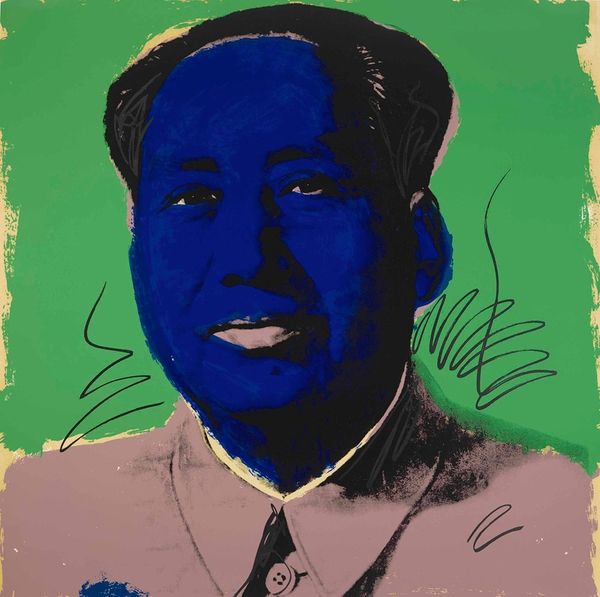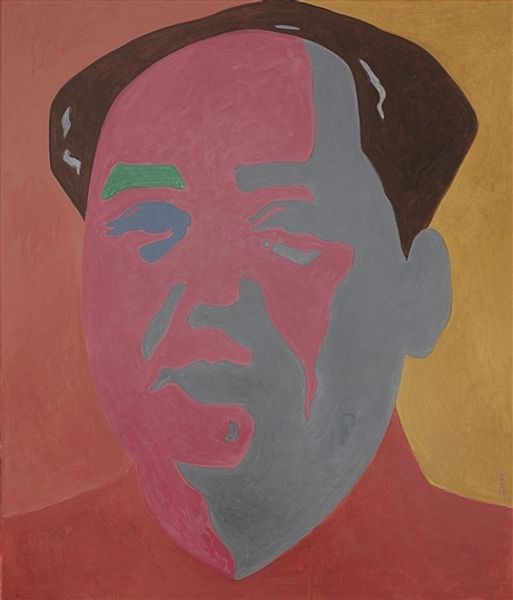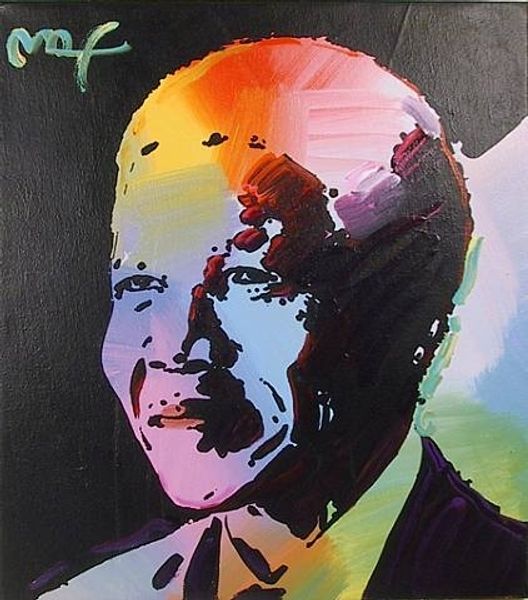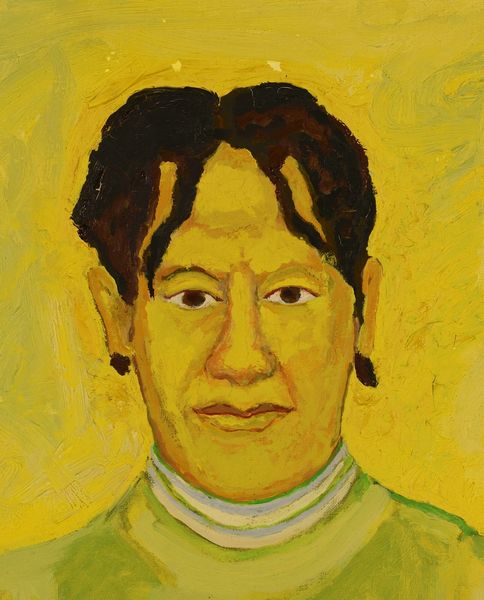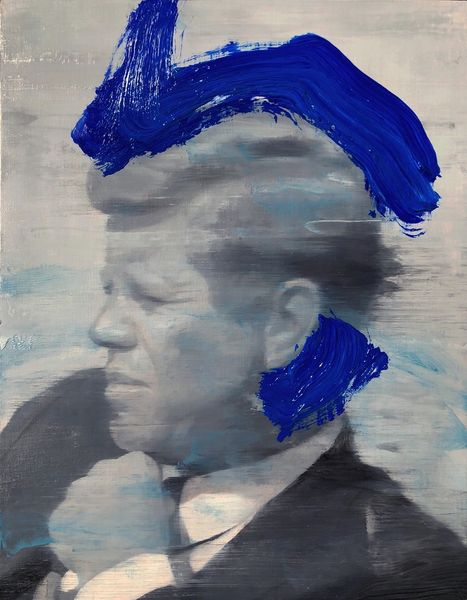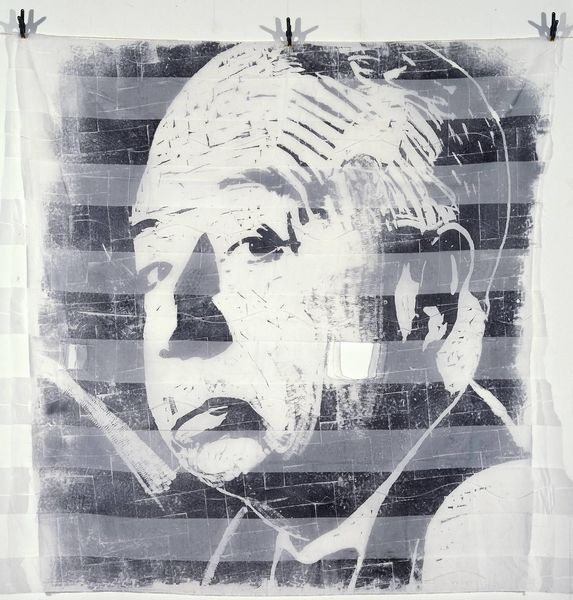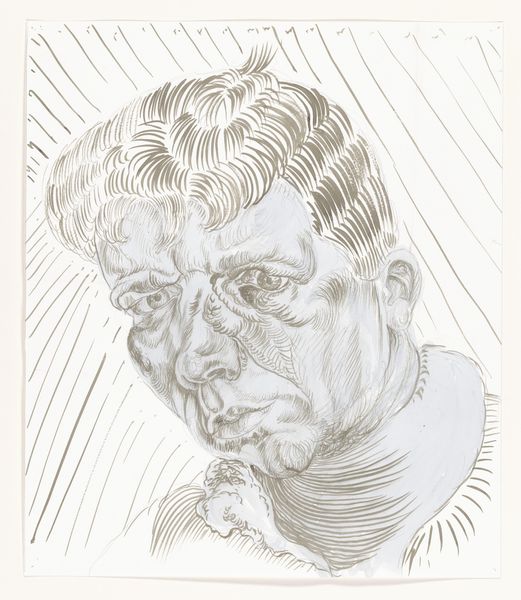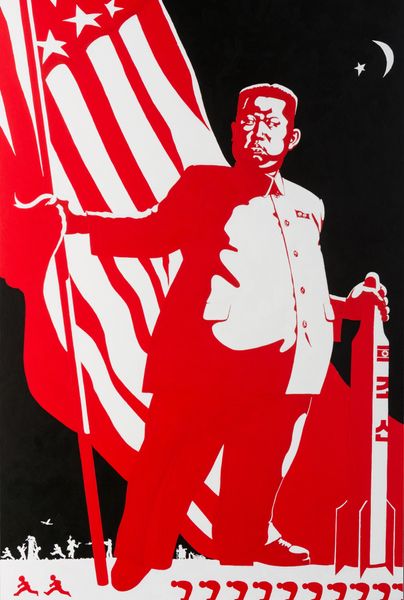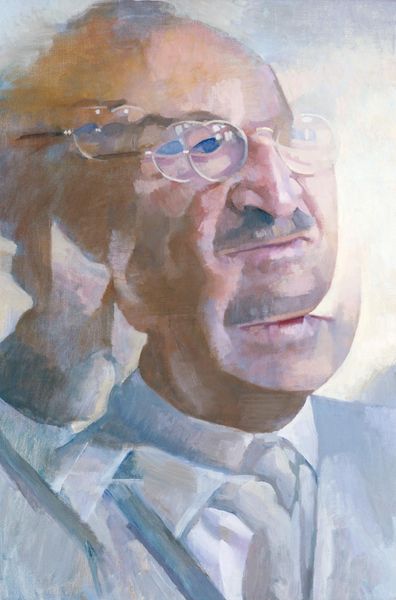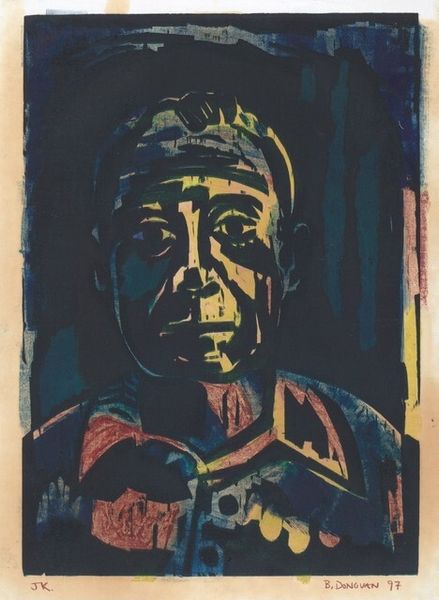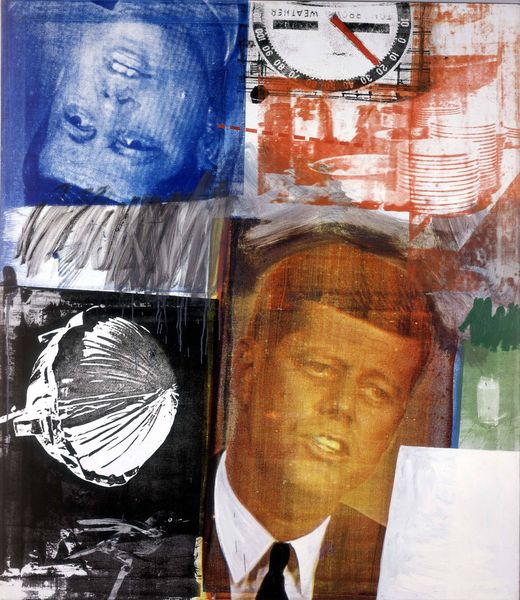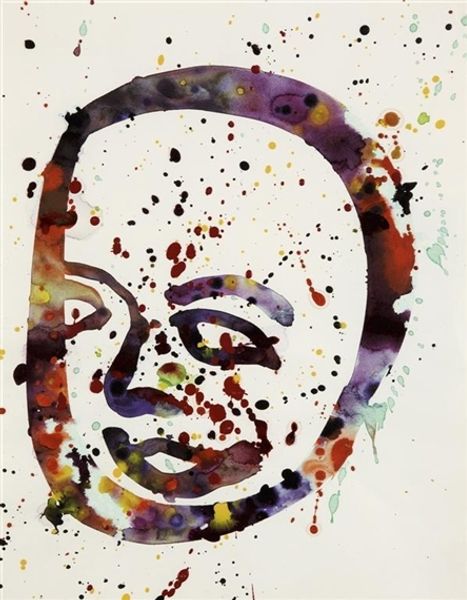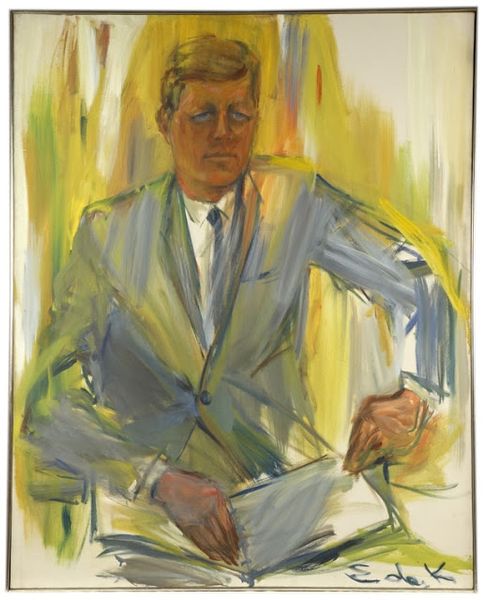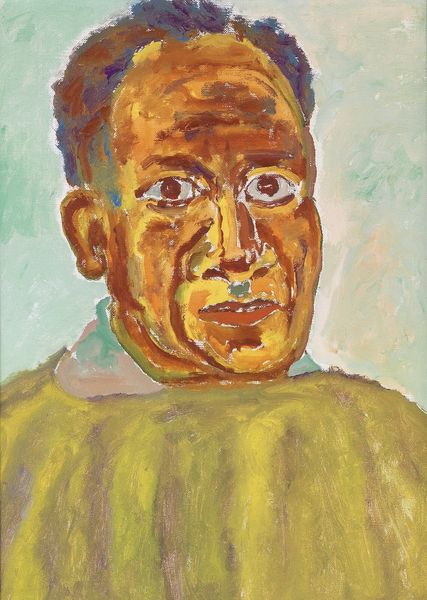
#
portrait reference
#
neo expressionist
#
acrylic on canvas
#
animal portrait
#
animal drawing portrait
#
portrait drawing
#
facial portrait
#
portrait art
#
fine art portrait
#
digital portrait
Dimensions: overall: 127.3 × 107.6 cm (50 1/8 × 42 3/8 in.)
Copyright: National Gallery of Art: CC0 1.0
Editor: Here we have Andy Warhol’s "Mao," painted in 1973, using acrylic on canvas. The colours are bold, and the brushstrokes seem so free. It's striking, how Warhol uses this almost careless style when depicting a figure of such immense political power. What’s your take on this piece? Curator: It’s crucial to consider the conditions of production. Warhol, an established brand, tackling Mao, a symbol of anti-capitalism – the very system fueling Warhol’s art making. This wasn’t simply a portrait, but a mass-produced commodity. It forces us to ask: what happens when revolutionary imagery is absorbed into the market? Editor: So you're saying the act of creation, the sheer commercial aspect of it, is the key point? The bright colors almost feel like they are mocking the revolutionary nature of the subject, maybe? Curator: Precisely. The repetitive silkscreening process – deliberately mechanical, anti-gestural – reinforces this. Warhol is highlighting the commodification of even the most potent symbols. Consider also the source imagery, likely a state-approved photograph. Warhol, in manipulating the image, subtly questions the control inherent in image production itself. How does this sit with you? Editor: I guess it feels less like a sincere artistic statement and more like a calculated commentary on the power of image and consumerism in a capitalist society, which feels incredibly relevant. It uses Mao, the very symbol against capitalism to ironically sell the art, itself being part of capitalism. It's genius! Curator: And the materials – acrylic, readily available, industrially produced paint – further underscore the accessibility and mass-market appeal he courted. Thinking about this piece, what stays with you? Editor: How materials and artistic choices can reveal much about the work’s critique on mass culture. Curator: Exactly. Warhol turns Mao into a product.
Comments
No comments
Be the first to comment and join the conversation on the ultimate creative platform.
